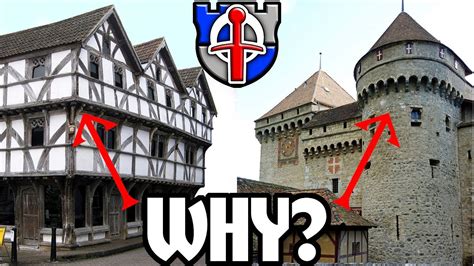tudor architecture history | tudor architecture interior tudor architecture history Some uncommon yet striking features make a traditional Tudor-style home relatively easy to identify. These fundamental elements can help you distinguish a Tudor . See more $14K+
0 · why do tudor houses overhang
1 · what were tudor houses like
2 · tudor architecture timeline
3 · tudor architecture pictures
4 · tudor architecture interior
5 · famous tudor architects
6 · characteristics of tudor houses
7 · characteristics of tudor architecture
$8,900.00
Tudor architecture refers partly to the architectural style that emerged between 1485 and 1603 when artisans built sophisticated two-toned manor homes combining Renaissance and Gothic design elements. The main features of Tudor architecture include steeply pitched gable roofs, gangs of small leaded-glass . See moreTudor architecture continued to pop up in villages throughout England until Elizabethan-Tudor architecture took over after 1558. Eventually, the traditional Tudor architecture . See more
Some uncommon yet striking features make a traditional Tudor-style home relatively easy to identify. These fundamental elements can help you distinguish a Tudor . See more
While Tudor architecture borrowed many similar construction elements from the Gothic style, such as arches and multi-paned glass windows, it was favored as more practical for . See more Tudor architecture refers partly to the architectural style that emerged between 1485 and 1603 when artisans built sophisticated two-toned manor homes combining Renaissance and Gothic design elements.The Tudor architectural style is the final development of medieval architecture in England and Wales, during the Tudor period (1485–1603) and even beyond, and also the tentative introduction of Renaissance architecture to Britain.
Tudor architecture was the Medieval architectural style developed in the early part of the Tudor Dynasty in England between the time period of 1485 to 1603. This phase had 6 rulers―Henry VII, Henry VIII, Edward VI, Jane Grey, Mary I, and Elizabeth I.
Tudor style, type of British architecture, mainly domestic, that grafted Renaissance decorative elements onto the Perpendicular Gothic style between 1485 and 1558.
Tudor architecture, a style that flourished in England from the late 15th century to the early 17th century, is one of the most recognizable and beloved - British Heritage, Built Britain, Featured, Tudor Era.The architecture of early Tudor England displayed continuity rather than change. Later, however, the great country house came into its own. The Tudor era witnessed the most sweeping religious changes in England since the arrival of Christianity, which affected every aspect of national life.
Tudor architecture is a style of building that started in England and Wales from 1485 to 1603. It blends elements from the Renaissance with the older Perpendicular Gothic look. You'll know Tudor homes by their half-timbered frames, which show wood on the outside and are filled in with white stucco. Tudor architecture began in England during the late 15th century, evolving as the country transitioned from the medieval Gothic style to the early Renaissance. Named after the Tudor dynasty, which ruled from 1485 to 1603, the style emerged as England found political stability after the Wars of the Roses.Tudor and Elizabethan architecture (1485-1603) Comparative peace under the Tudor monarchs brought prosperity to England, Wales and Ireland. The wealth of great landowners - the Crown, the aristocracy and the Church - could be poured into building. It .1. Hampton Court Palace, London. As mentioned before, Hampton Court Palace is a prime example of Tudor architecture. Its red-brick facade, Tudor gatehouse, and the magnificent Great Hall showcase the grandeur of the era. 2. St. George’s Chapel, Windsor Castle.
why do tudor houses overhang
Tudor architecture refers partly to the architectural style that emerged between 1485 and 1603 when artisans built sophisticated two-toned manor homes combining Renaissance and Gothic design elements.
what were tudor houses like
The Tudor architectural style is the final development of medieval architecture in England and Wales, during the Tudor period (1485–1603) and even beyond, and also the tentative introduction of Renaissance architecture to Britain.Tudor architecture was the Medieval architectural style developed in the early part of the Tudor Dynasty in England between the time period of 1485 to 1603. This phase had 6 rulers―Henry VII, Henry VIII, Edward VI, Jane Grey, Mary I, and Elizabeth I.Tudor style, type of British architecture, mainly domestic, that grafted Renaissance decorative elements onto the Perpendicular Gothic style between 1485 and 1558. Tudor architecture, a style that flourished in England from the late 15th century to the early 17th century, is one of the most recognizable and beloved - British Heritage, Built Britain, Featured, Tudor Era.
The architecture of early Tudor England displayed continuity rather than change. Later, however, the great country house came into its own. The Tudor era witnessed the most sweeping religious changes in England since the arrival of Christianity, which affected every aspect of national life.
Tudor architecture is a style of building that started in England and Wales from 1485 to 1603. It blends elements from the Renaissance with the older Perpendicular Gothic look. You'll know Tudor homes by their half-timbered frames, which show wood on the outside and are filled in with white stucco. Tudor architecture began in England during the late 15th century, evolving as the country transitioned from the medieval Gothic style to the early Renaissance. Named after the Tudor dynasty, which ruled from 1485 to 1603, the style emerged as England found political stability after the Wars of the Roses.
Tudor and Elizabethan architecture (1485-1603) Comparative peace under the Tudor monarchs brought prosperity to England, Wales and Ireland. The wealth of great landowners - the Crown, the aristocracy and the Church - could be poured into building. It .
balaclava fendi

beirut fendi casa flats
tudor architecture timeline
Vintage Turn-O-Graph THUNDERBIRD Ref-16250 Stainless Steel 18k White Gold Bezel Bj-1980. NZ$ 11,767 + NZ$726 for shipping. DE. . Rolex Oyster Perpetual DateJust Watch 18K Yellow Gold & Stainless Steel Ref.1625. NZ$ 9,868 . Click on the "Suggest a price" button on the listing page.
tudor architecture history|tudor architecture interior


























